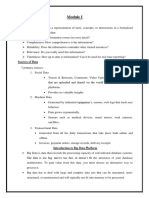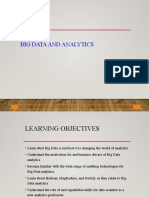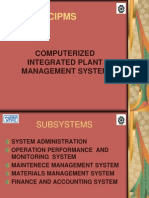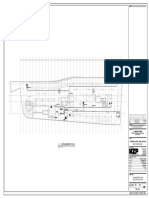0% found this document useful (0 votes)
17 views82 pagesModule 1-BDA
The document provides an introduction to Big Data Analytics, covering key concepts such as data architecture, sources, quality, storage, and analysis techniques. It discusses the characteristics of Big Data, including the 5 Vs (Volume, Velocity, Variety, Veracity, Value), and explores various data types and handling techniques. Additionally, it highlights the importance of cloud computing, distributed systems, and data preprocessing in managing and analyzing large datasets.
Uploaded by
Aditya RajCopyright
© © All Rights Reserved
We take content rights seriously. If you suspect this is your content, claim it here.
Available Formats
Download as PDF, TXT or read online on Scribd
0% found this document useful (0 votes)
17 views82 pagesModule 1-BDA
The document provides an introduction to Big Data Analytics, covering key concepts such as data architecture, sources, quality, storage, and analysis techniques. It discusses the characteristics of Big Data, including the 5 Vs (Volume, Velocity, Variety, Veracity, Value), and explores various data types and handling techniques. Additionally, it highlights the importance of cloud computing, distributed systems, and data preprocessing in managing and analyzing large datasets.
Uploaded by
Aditya RajCopyright
© © All Rights Reserved
We take content rights seriously. If you suspect this is your content, claim it here.
Available Formats
Download as PDF, TXT or read online on Scribd
/ 82






















































































